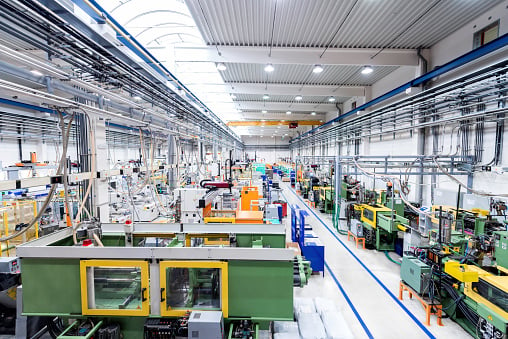Popular across many industries, overmolding may initially appear to simply enhance the appearance of a gadget, adding a contrasting color or texture. But in addition to being lightweight, overmolding enhances ergonomics, dampens vibration, and enhances the feel and grip of a gadget.
The end result is a product that is simple to use and can tolerate impact, abrasion, chemical reactions, and variations in temperature and humidity, particularly in medical equipment. Additionally, overmolding excellently satisfies a crucial requirement in the medical industry: the usage of portable, digital equipment.
The majority of these devices are constructed from two types of tough plastic: an interior frame made of molded plastic provides strength and rigidity, while the exterior is made of plastic to give it a precisely engineered appearance, a distinctive shape or contour, a vibrant color, and a slightly tacky surface to prevent slipping and sliding.
Plastic overmolding effortlessly integrates many materials into one component or finished good to enhance design, functionality, and appearance.
THE PROCESS OF PLASTIC OVERMOLDING
Overmolding, in its simplest form, is the partial or complete covering of a plastic base substrate with a thin overlain substance, frequently a thermoplastic elastomer (TPE).
Two distinct molding operations and two distinct tools are used throughout the overmolding process. The foundation substrate is initially independently molded. The substrate is put into an overmold tool to create the finished item, after which material is injected, the mold closes over the substrate, and the finished product is packaged.
The end result is an ergonomic injection-molded plastic product without a "plasticky" feel, improved durability, impact resistance, and grip. Highly complicated items that would be too challenging to create in a single injection molding operation can be produced via overmolding.
OVERMOLDING IN PORTABLE DEVICES: 4 EXAMPLES
1. SURGERY APPARATUS AND DEVICES
Devices in the operating room must perform at their very best. Surgical instrument overmolded handles offer a surgeon a cozy, ergonomic grip for the best precision. The ability to tolerate abrasive cleaning chemicals, autoclaving, and other environmental variables is necessary for portable monitors and other overmolded products (radiation from scans).
Additionally, surgical gadgets must adhere to FDA medical standards. Specific TPE grades fit these applications well since they are chemical resistant.
2. AED UNITS
Portable Automated External Defibrillators (AEDs), which can save lives, need to be shielded from impacts, the elements, and other dangers. An overmolded TPE layer protects the inside unit from abuses that happen in hectic emergency situations, lessens shock, produces a watertight seal, is UV resistant, and offers UV resistance.
In order to prevent moisture or dust particles from entering the battery chamber and causing corrosion, special housing must be designed and sealed. To ensure adherence to FDA requirements, a skilled injection molder with expertise in plastics engineering and clean-room capabilities must be hired.
3. APPLICATIONS OF ELECTRICITY
TPE is the best material for overmolding when electrical components need to survive the elements. To prevent shock and fire, specially made TPE gaskets expand to form a seal and prevent moisture from coming into touch with electrical connections.
4. DEVICES FOR COMMUNICATION
Material selection is essential for producing portable medical equipment that is light enough for EMTs to use in the field. For the bonding process to safeguard delicate inner electronics against fine dust particles, rain, shock, vibration, and other factors, the right chemical interaction/compatibility between the substrate and TPE is essential.
In two-way radios used by emergency responders and other devices, overmolding aids in achieving dependability and longevity.
THE SKILLS INVOLVED IN PLASTIC OVERMOLDING
Working with an injection molder who is knowledgeable with the numerous chemical and environmental interactions between the molded resins and overmolding materials is crucial, as was already said.
In particular, when it comes to material compatibility in overmolding, specialized knowledge and experience are needed to carry out a multi-material injection molding process at large volume and with acceptable high manufacturing yields.
For instance, the melt temperatures or how much two plastics expand when heated may differ significantly from one another. The inner and exterior layers of plastic may not fit together adequately or they may negatively impact one another mechanically or chemically if there is a mismatch.
The objective is to successfully fuse the two molded plastics together to create a single object with complete and long-lasting structural integrity. Because of this, tremendous care must be taken throughout the design and production of an overmolded product, ideally with the early and continuous participation of an experienced custom injection molder.
Contact a member of the REX Team right away for more details on our services.

